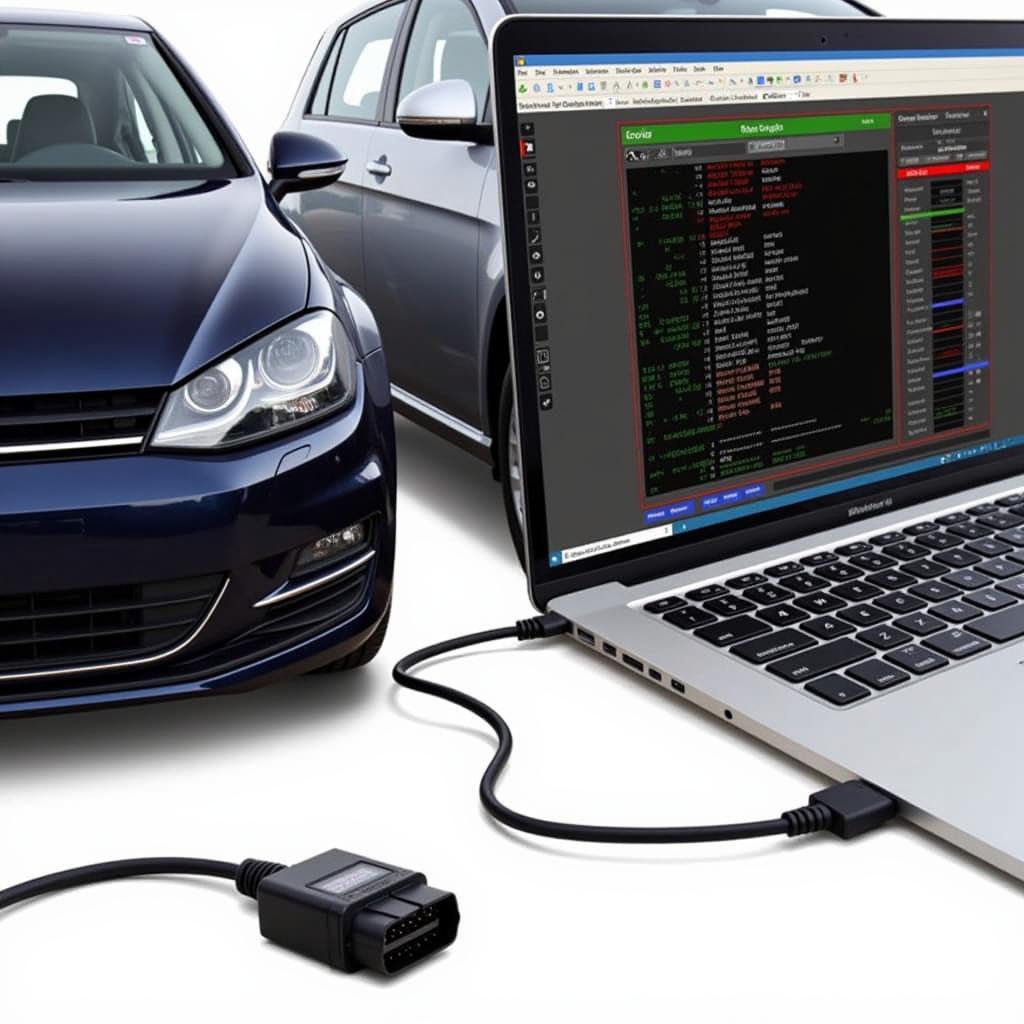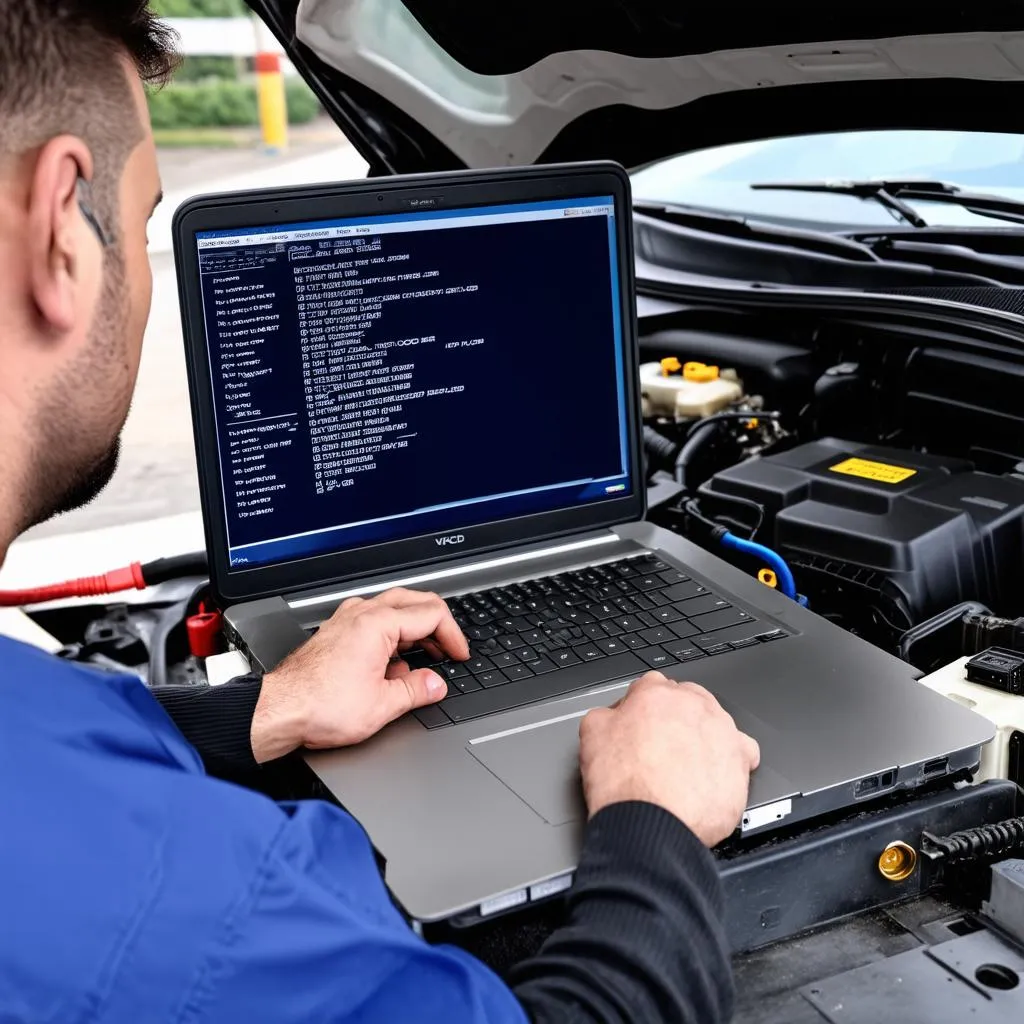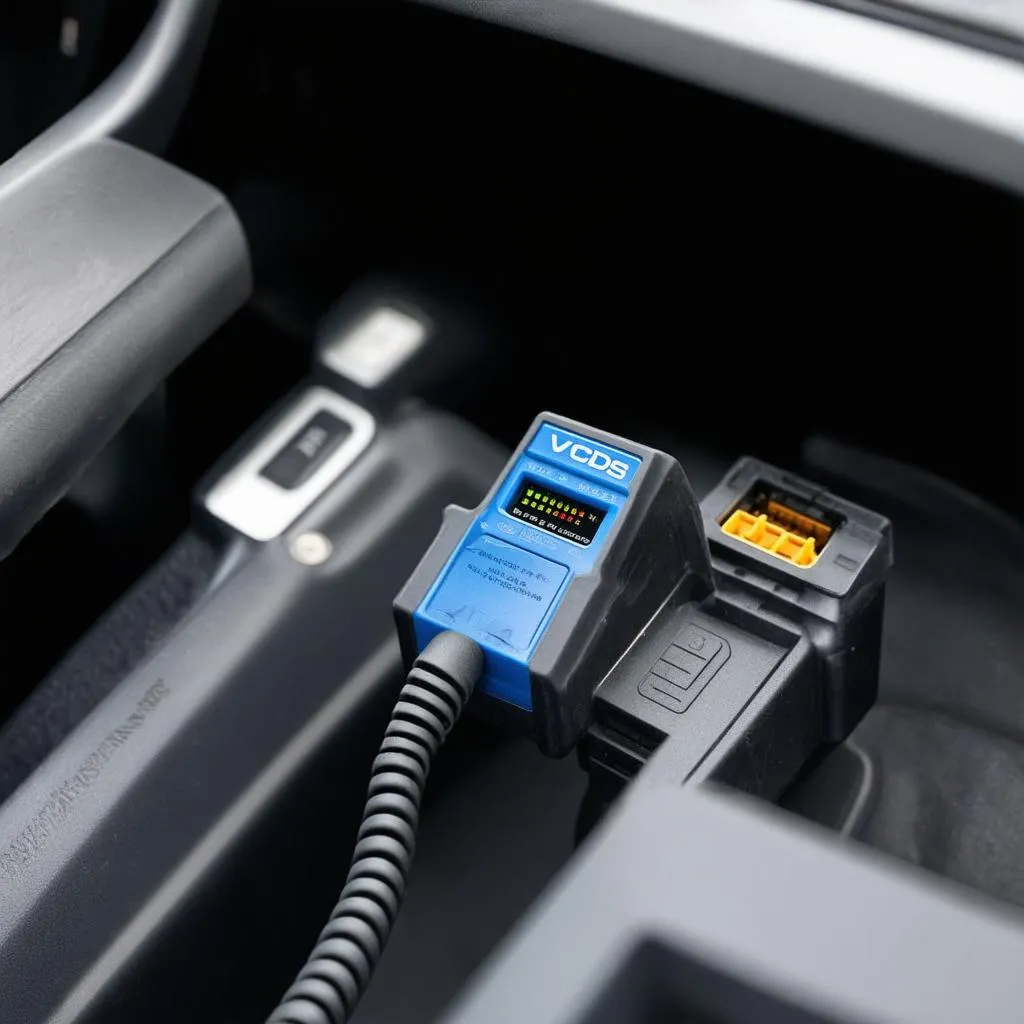VCDS diagnostic is a powerful tool for diagnosing and troubleshooting issues in Volkswagen, Audi, Seat, and Skoda vehicles. This comprehensive guide will explore the functionalities, benefits, and practical applications of VCDS diagnostics, empowering you to understand and address your car’s needs effectively.
Whether you’re a car owner, a mechanic, or an automotive enthusiast, understanding VCDS diagnostics can save you time, money, and frustration. From identifying simple sensor malfunctions to tackling complex electronic control unit (ECU) issues, VCDS offers unparalleled access to your vehicle’s inner workings.
Understanding the Power of VCDS Diagnostic
VCDS, which stands for “VAG-COM Diagnostic System,” is a software and hardware combination that allows you to communicate with the various control modules within your vehicle. Think of it as a direct line to your car’s brain, allowing you to read fault codes, monitor live data, perform adaptations, and even program certain features. Unlike generic OBD-II scanners, VCDS provides access to manufacturer-specific codes and functionalities, making it an essential tool for in-depth diagnostics. This detailed access can be crucial in pinpointing the root cause of a problem, especially in complex modern vehicles. Similar to a vcds diagnostic tool, other specialized diagnostic tools offer the same level of control and access.
How VCDS Diagnostic Works
VCDS communicates with your vehicle’s control modules through a specialized diagnostic cable. This cable connects your computer to the vehicle’s OBD-II port, providing a secure and reliable connection. The software then sends requests to the various modules, retrieves data, and presents it in a user-friendly format. This allows you to quickly identify any stored fault codes, which are essentially error messages that indicate a specific problem within the system. For instance, if your check engine light is on, VCDS can pinpoint the exact sensor or component that’s causing the issue. This level of precision is what sets VCDS apart from generic diagnostic tools.
 VCDS Diagnostic Cable Connected to Car OBD-II Port
VCDS Diagnostic Cable Connected to Car OBD-II Port
Benefits of Using VCDS Diagnostic
VCDS offers numerous advantages over generic OBD-II scanners. Its manufacturer-specific functionalities allow for a more comprehensive analysis of your vehicle’s systems, enabling you to:
- Read and Clear Fault Codes: Quickly identify and clear diagnostic trouble codes (DTCs), providing detailed information about the issue.
- Monitor Live Data: Observe real-time sensor readings to diagnose intermittent problems and monitor system performance.
- Perform Adaptations: Customize various vehicle settings, such as throttle response, window operation, and lighting configurations.
- Program Certain Features: Access hidden features and functionalities within your vehicle’s control modules. For example, you might be able to enable automatic locking doors or adjust the automatic transmission shift points.
- Troubleshoot Complex Issues: Diagnose issues related to the engine, transmission, ABS, airbags, and other critical systems with unparalleled depth.
Finding a reliable diagnostic service is essential. You can search for vcds diagnostics or even look for vcds diagnostic near me to find local specialists.
Is VCDS Diagnostic Worth the Investment?
John Smith, a seasoned automotive technician, explains: “VCDS is an invaluable tool for any serious automotive professional or enthusiast. The level of detail it provides allows you to quickly diagnose and resolve issues that would otherwise be incredibly challenging to pinpoint.”
Practical Applications of VCDS Diagnostic
VCDS is incredibly versatile and can be used in a wide range of scenarios, such as:
- Troubleshooting Check Engine Light: Quickly pinpoint the cause of an illuminated check engine light and address the underlying issue.
- Diagnosing Transmission Problems: Identify issues with the automatic or manual transmission, such as slipping gears or erratic shifting.
- Troubleshooting ABS and Airbag Systems: Diagnose and resolve problems with the anti-lock braking system (ABS) and airbag control module.
- Customizing Vehicle Settings: Adjust various vehicle settings to personalize your driving experience. Similar adjustments are possible with an audi diagnostic tool vcds.
Common VCDS Diagnostic Procedures
Some common procedures performed using VCDS include:
- Scanning for Fault Codes: Connecting the cable, launching the software, and initiating a scan to retrieve any stored DTCs.
- Clearing Fault Codes: After addressing the underlying issue, clearing the DTCs resets the check engine light and allows the system to monitor for recurring problems.
- Monitoring Live Data: Observing real-time sensor readings while driving or performing specific tests to diagnose intermittent problems.
- Performing Output Tests: Activating specific components, such as fuel injectors or relays, to verify their functionality.
 Mechanic Using VCDS to Diagnose Car Problem
Mechanic Using VCDS to Diagnose Car Problem
Conclusion
VCDS diagnostic offers a powerful and versatile solution for understanding and addressing your vehicle’s needs. Whether you’re a car owner, mechanic, or automotive enthusiast, investing in VCDS can save you time, money, and frustration in the long run. With its comprehensive diagnostic capabilities, VCDS empowers you to take control of your car’s maintenance and repairs. Understanding your vehicle’s health through VCDS diagnostic helps ensure a smooth and reliable driving experience.
For assistance, contact us via Whatsapp: +1 (641) 206-8880, Email: [email protected] or visit us at 276 Reock St, City of Orange, NJ 07050, United States. We have a 24/7 customer support team. You can also find more helpful articles like vcds diagnostic cable.



